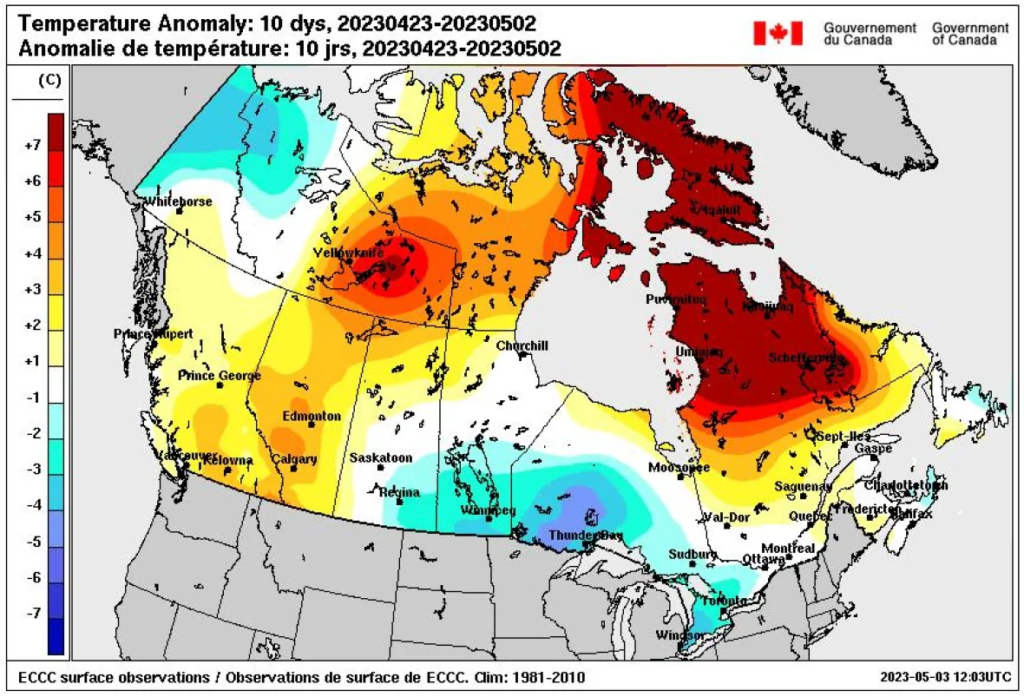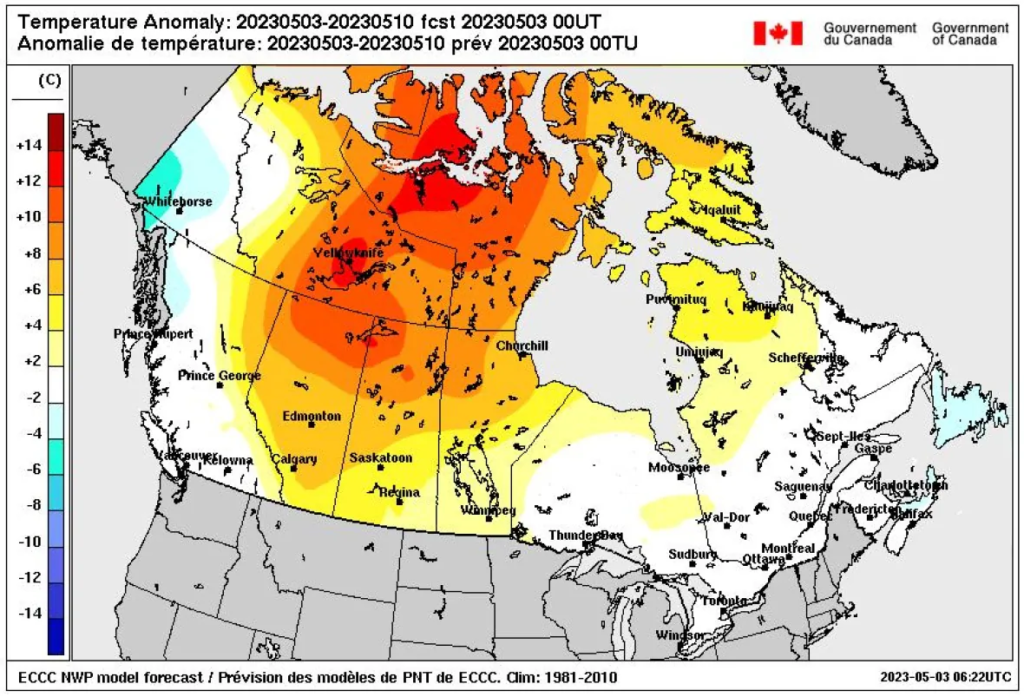In the aftermath of receding flood risks, residents of Hay River in the southwest of the territory are now faced with the impact of unprecedented temperatures.
This third of marks the warmest recorded day in Hay River’s history, surpassing the previous record set in 1898.
he community has witnessed temperatures as high as 30 C, exceeding the previous record by three degrees. The entire southwestern N.W.T. is experiencing a notably warmer than usual spring, with temperatures ranging from eight to twenty degrees above average, according to Jesse Wagar, a meteorologist with Environment and Climate Change Canada.
Although a low-pressure system will briefly decrease temperatures on Thursday, meteorologist Jesse Wagar anticipates a rebound to high teens and low 20s in the southwestern N.W.T. over the next week.
The current upper flow pattern responsible for the warm temperatures is persistent and will require significant disruption to change, according to Wagar. Furthermore, she notes that this year is an El Niño year, indicating a summer warmer than usual.
It is worth noting that the previous record high in Hay River was documented in 2016.


map displays the temperature deviation over the last ten days (between April 23 and May 2), revealing that the southwestern N.W.T. and the majority of Nunavut have experienced temperatures above the normal range and rising. In contrast, northwestern N.W.T. has remained cooler than average during this period, as indicated by Environment and Climate Change Canada.
The ongoing warm temperatures have caused river ice to melt and soften during the spring break-up, according to the N.W.T. government’s latest water monitoring bulletin.
Although the Liard and Mackenzie Rivers near Fort Simpson are experiencing a slight rise in water levels under the ice, the bulletin notes that the increases are minimal. Wednesday’s bulletin further reveals that satellite imagery shows most of the lower Liard River basin’s snowpack has melted, and snowmelt runoff has likely ceased.
Additionally, there are reported areas of open water between Jean Marie River and Fort Simpson. With these concerns addressed, attention now shifts towards the impending wildfire risks.
The territorial government has scheduled a press briefing on Thursday afternoon to provide updates on the matter.

